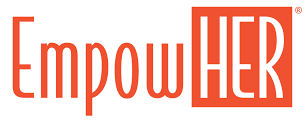Blog
Topics
POPULAR TAGS
January 21, 2016
9 Ways to Encourage Baby’s Speech Development
Your baby is a social animal and is dependent on your reactions to his efforts at language. You can reinforce your baby’s speech in a variety of ways by capturing your child’s attention and engaging him in the process of learning.
Here are nine ways you can help encourage your baby’s speech development:
- Play games such as peekaboo or patty cake. I used to sing to my grandchildren, “If you’re happy and you know it, clap your hands.” Activity along with word can help to advance language.
- Give your child items and identify them with energy. For example, say with great enthusiasm: “Here’s your spoon! Here’s your applesauce!” By attaching action with words and emotion, you help your child create associations in his brain, and this can help advance his speech. Point to the light, and say, “Here’s the light.” By pointing with your finger, you’re connecting motion to language.
- The key to teaching and enhancing language is to talk, talk, talk… trying to be as physical as possible when talking. Attaching emotion to language enhances linguistic connections.
- Be interactive. If you’re feeding your child, have a two-way conversation by asking questions. For example, “We’re having applesauce, do you like applesauce?” The synapses are connecting as you make associations. When your child’s activities are interactive, you encourage him to think about what you’re saying. This is the learning process. Questions such as, “Do you want to play? Do you want to eat? Do you want to take a bath?” will encourage him to think. Speaking to your child in complicated language can raise his IQ approximately 20 points.
- Remember to identify body parts. For example, “This is your nose. These are your feet. This is your mouth.” Then ask your child, “Where is your nose? Where are your feet? Where is your mouth?” Elevating your voice with emotion, while doing, makes learning exciting and therefore, captures your child’s attention.
- Sing songs, recite nursery rhymes, read stories, and have your child tell you a story. Play with things like a jack-in-the-box, a top, or a ball, identifying each item while showing your child how it works. For example, the jack-in-the-box pops open, the top spins, the ball bounces.
- Take pictures and show your child what he looks like. Let him look at himself in the mirror and ask, “Who is that in the mirror?” Then identify your child by asking, “Is that you?” This is one way to create an associative mass that enhances learning.
- Categorize things. Put all the stuffed animals together. Put all the bath toys together. Put all the pots and pans together. Then you can ask your child to identify them. “Where are all the stuffed animals? Where are the bath toys? Where are all the pots and pans?” This is how he connects and expands his knowledge, and uses his brain like an orchestra.
- The final thing I like to do is to play baroque music, 24/7, on an iPod in the background. This is because baroque music puts the brain in an alpha state, which is similar to meditation. Therefore, it throws more blood to the prefrontal cortex and helps your child process information better, helps him hold images longer and helps him and use his brain more effectively. Baroque music, especially in the largo movement, is syncopated to your child’s heartbeat, so it puts him in a calm and relaxed state. Therefore, he has a better chance to reach his full potential.





